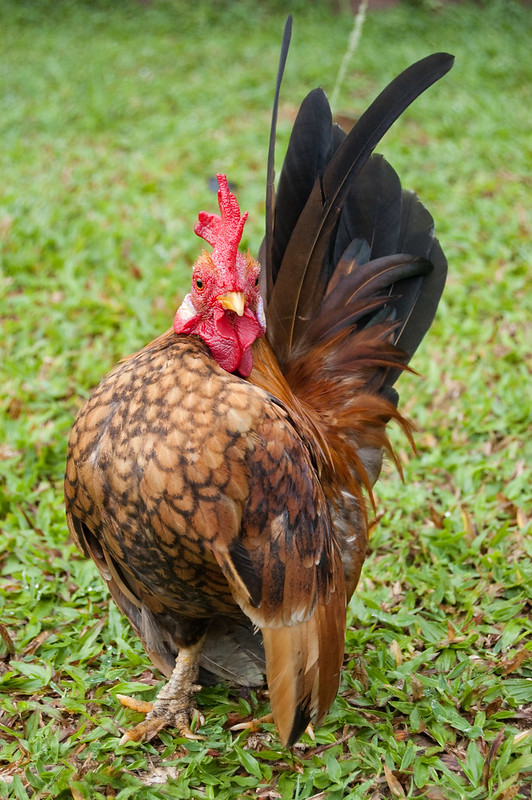Poise and Elegance Personified
Chicken Beauty Pageants

The contestants strut on the stage to the rhythm of the blasting music. They strike poses for the cameras, their beauty, poise, and elegance on full display for the discerning judges and adoring fans. The odd thing about this beauty pageant, however, is that all the contestants are chickens.
But these are no ordinary chickens. They are Ayam Serama chickens, a tropical breed believed to have originated in Malaysia. They are one of the world’s smallest breeds of chicken—a full grown Serama is only about the size of a pigeon. These diminutive chickens are not bred for food, but rather ornamentation, with striking proportions and bright feathers that shine on the catwalk. These showy birds are also friendly by nature, making them ideal pets. Their popularity has made them the number one household pet in Malaysia, surpassing both cats and dogs.
The origin of the Serama chicken is uncertain—some theories date their origins to the 1600s, speculating their namesake to be the Thai king Sri Rama, but the modern breed can be tied to a 1970s breeder named Wee Yean Een from the Malaysian state of Kelantan. They come in over 200 colors, and their feathers can be frizzled, silked, or smooth.
According to the Serama Council of North America, there are three types of recognized Serama: American, Traditional, and Ayam (or Malaysian) Serama. The American and Traditional Serama have the same body type but can be distinguished by the color of their plumage. The American Serama can be white, black, exchequer (or spotted white and black), blue, ginger, or splash (white with patches of black on the tail). The Traditional Serama can be any color other than those of the American variety. The Ayam Serama, the show chicken, is characterized by a more “extreme” body type—much higher chests, a more pulled-back head, and a more sharply angled and shorter tail. The Ayam Serama is considered to have a more balanced and harmonious look, with pageant judges scoring partly based on the “natural flow” of its body parts. How far the head is pulled back affects the angle of the tail, their wings align with their eyes, and they are capable of holding more exaggerated poses.
Ayam Seramas are also set apart from the other breeds in temperament. They are social, they like to be pampered, they like to show off, and most importantly, they can be trained, which plays a crucial part in their runway walks. In a typical Ayam Serama beauty pageant, the owner plays a song, to which the chicken “dances” and strikes dramatic poses. Often the owner dances in front of the chicken, which then mimics the owner’s movements—much to the spectators’ delight. The contestants are judged by the color of their plumage, their combs, their stance, their strut, and ultimately, their spirit and the pride they display in their movements.
An award winning Ayam Serama can bring considerable benefits to the owner. Apart from taking home the monetary prize, the owners then become recognized as significant breeders, which itself can lead to a lucrative career in breeding and selling these champion-quality chickens to collectors and enthusiasts.
Serama beauty pageants, already popular throughout southeast Asia, are slowly expanding to other regions of the world—similar beauty pageants are being held in China and Libya. These beauty pageants are still not at the stage where they would draw global attention, but with its star potential, it could be no time before one day the Ayam Serama struts down the runways of Paris and Milan.
SASSAN TABATABAI is the Guest Editor of Mizan Pop.


